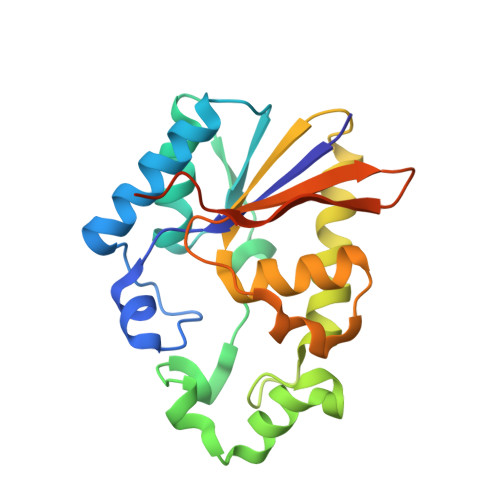Structural analysis of EhPSP in complex with 3-phosphoglyceric acid from Entamoeba histolytica reveals a basis for its lack of phosphoglycerate mutase activity.
Kumari, P., Vijayan, R., Gourinath, S.(2021) Int J Biol Macromol 178: 1-10
- PubMed: 33631257
- DOI: https://doi.org/10.1016/j.ijbiomac.2021.02.153
- Primary Citation of Related Structures:
6M1X - PubMed Abstract:
Entamoeba histolytica phosphoserine phosphatase (EhPSP), a regulatory enzyme in the serine biosynthetic pathway, is also a structural homolog of cofactor-dependent phosphoglycerate mutase (dPGM). However, despite sharing many of its catalytic residues with dPGM, EhPSP displays no significant mutase activity. In the current work, we determined a crystal structure of EhPSP in complex with 3-PGA to 2.5 Å resolution and observed striking differences between the orientation of 3-PGA bound to EhPSP and that to its other homologous structures. We also performed computational modeling and simulations of the intermediate 2,3-bisphosphoglyceric acid into the active site of EhPSP to better understand its mechanistic details. Based on these results and those of a similar study with the dPGMs from E. coli and B. pseudomallei, the affinity of EhPSP for 2,3-BPG was concluded to be lower than those of the other proteins. Moreover, a different set of 2,3-BPG interacting residues was observed in EhPSP compared to dPGMs, with all of the crucial interacting residues of dPGMs either missing or substituted with weakly interacting residues. This study has expanded our understanding, at the structural level, of the inability of EhPSP to catalyze the mutase reaction and has strengthened earlier conclusions indicating it to be a true phosphatase.
Organizational Affiliation:
School of Life Sciences, Jawaharlal Nehru University, New Delhi, India.
















